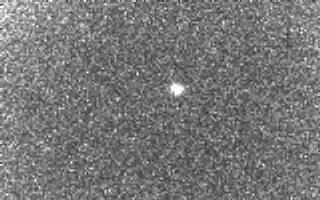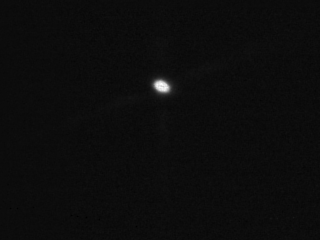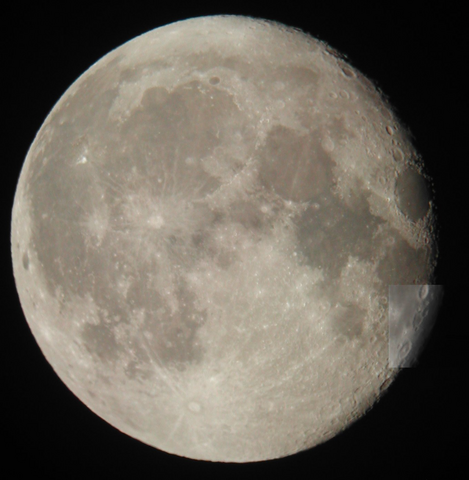
Raw frame (green)
I have a simple 3 inch reflector, bought via ebay.de for 11 EUR and carried from Hamburg. A 15 EUR webcam was cracked open and the imaging chip (with USB controller) was removed, and put into an empty floppy disk box with a cut-off Smarties paper tube attached. There is a picture of the camera available.

As you probably can tell from the image above, the quality is not particularly good. Even with a one second exposure, fixed-pattern noise starts swamping the picture. The field of view is around 8 times 6 minutes of arc, which means that without tracking, any object on the sky will move rather quickly across the image. This is normally considered a problem, when doing longer exposures, but since this camera can't make exposures longer than about one second, it can be turned into an advantage. By shifting and adding the frames, fixed-pattern (and random) noise gets cancelled out, while the actual object remains. Subtracting dark frames doesn't work well with this camera, this might be due to the automatic brightness correction, or other effects. With only dark frames subtracted, one gets many false positives (star-like objects which are actually remaining noise).

Here I have subtracted dark frames, shifted, and added about ten frames. As you can see, little noise remains. The dark spots on the star are due to the star covering pixels already saturated by noise, which makes the difference between an illuminated and a dark pixel zero, or black.
While this setup is clearly not optimal for faint objects, something much brighter practically eliminates noise problems. Instead, sharpness becomes the major issue. The picture below is a composite of a photograph taken by John S. French and another one by myself. Martin Wendt combined them. By a rather amazing coincidence, neither image was scaled or rotated to produce the composite, and in addition to that the phase of the moon is very similar.
The purpose of the composite image was mainly to approximate the field of view of my setup, by comparing the apparent size of the moon to the "real" angular diameter of it, which is about half a degree. It's also fun to see which craters and maria I managed to photograph!
